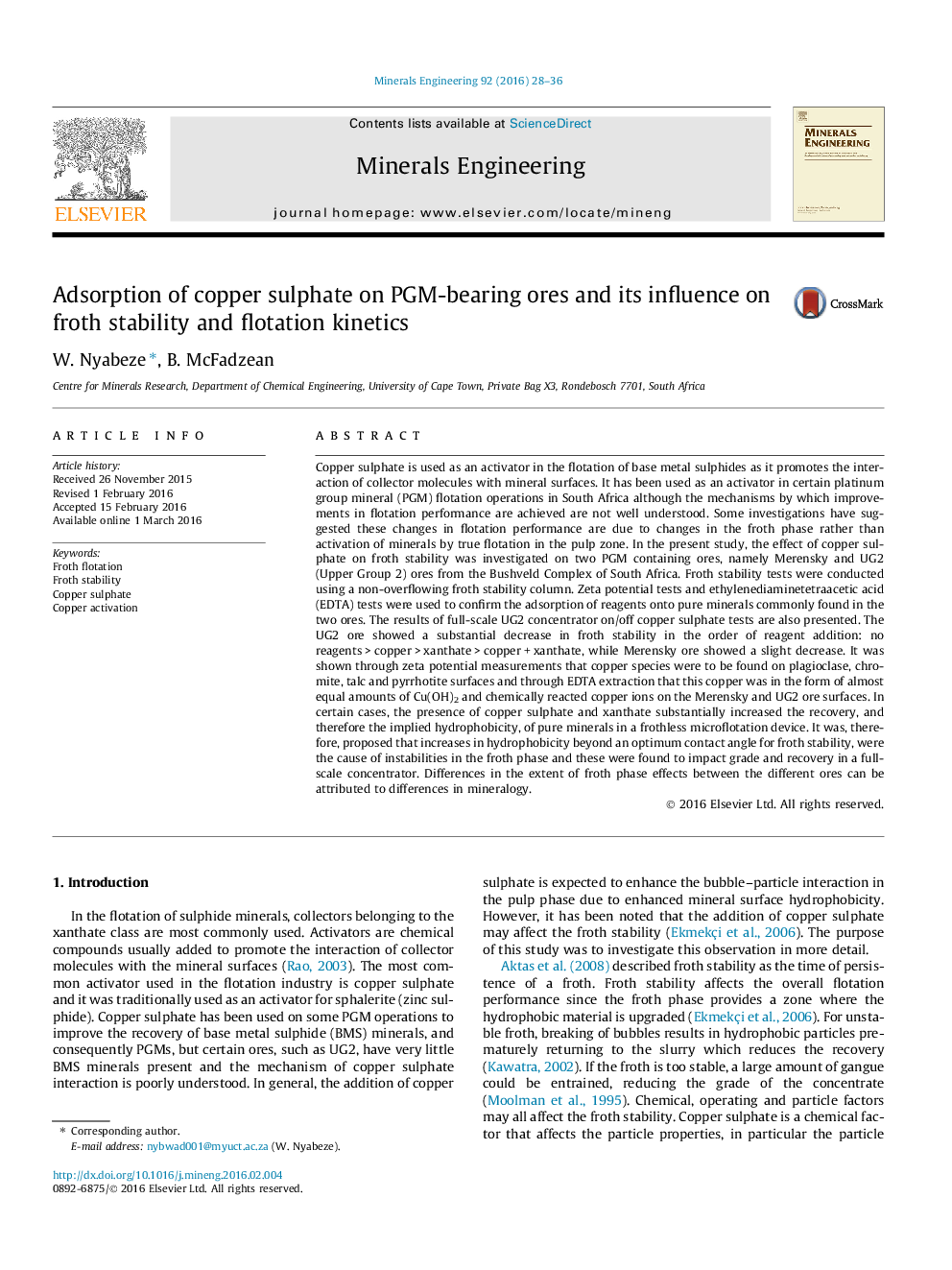| کد مقاله | کد نشریه | سال انتشار | مقاله انگلیسی | نسخه تمام متن |
|---|---|---|---|---|
| 232756 | 465303 | 2016 | 9 صفحه PDF | دانلود رایگان |

• Copper sulphate addition resulted in a decrease in froth stability.
• Froth stability of different ores affected differently by copper sulphate addition.
• Copper sulphate affects the amount and hydrophobicity of floated particles.
• Grade and recovery altered depending whether pulp or froth sub-processes dominate.
Copper sulphate is used as an activator in the flotation of base metal sulphides as it promotes the interaction of collector molecules with mineral surfaces. It has been used as an activator in certain platinum group mineral (PGM) flotation operations in South Africa although the mechanisms by which improvements in flotation performance are achieved are not well understood. Some investigations have suggested these changes in flotation performance are due to changes in the froth phase rather than activation of minerals by true flotation in the pulp zone. In the present study, the effect of copper sulphate on froth stability was investigated on two PGM containing ores, namely Merensky and UG2 (Upper Group 2) ores from the Bushveld Complex of South Africa. Froth stability tests were conducted using a non-overflowing froth stability column. Zeta potential tests and ethylenediaminetetraacetic acid (EDTA) tests were used to confirm the adsorption of reagents onto pure minerals commonly found in the two ores. The results of full-scale UG2 concentrator on/off copper sulphate tests are also presented. The UG2 ore showed a substantial decrease in froth stability in the order of reagent addition: no reagents > copper > xanthate > copper + xanthate, while Merensky ore showed a slight decrease. It was shown through zeta potential measurements that copper species were to be found on plagioclase, chromite, talc and pyrrhotite surfaces and through EDTA extraction that this copper was in the form of almost equal amounts of Cu(OH)2 and chemically reacted copper ions on the Merensky and UG2 ore surfaces. In certain cases, the presence of copper sulphate and xanthate substantially increased the recovery, and therefore the implied hydrophobicity, of pure minerals in a frothless microflotation device. It was, therefore, proposed that increases in hydrophobicity beyond an optimum contact angle for froth stability, were the cause of instabilities in the froth phase and these were found to impact grade and recovery in a full-scale concentrator. Differences in the extent of froth phase effects between the different ores can be attributed to differences in mineralogy.
Journal: Minerals Engineering - Volume 92, June 2016, Pages 28–36